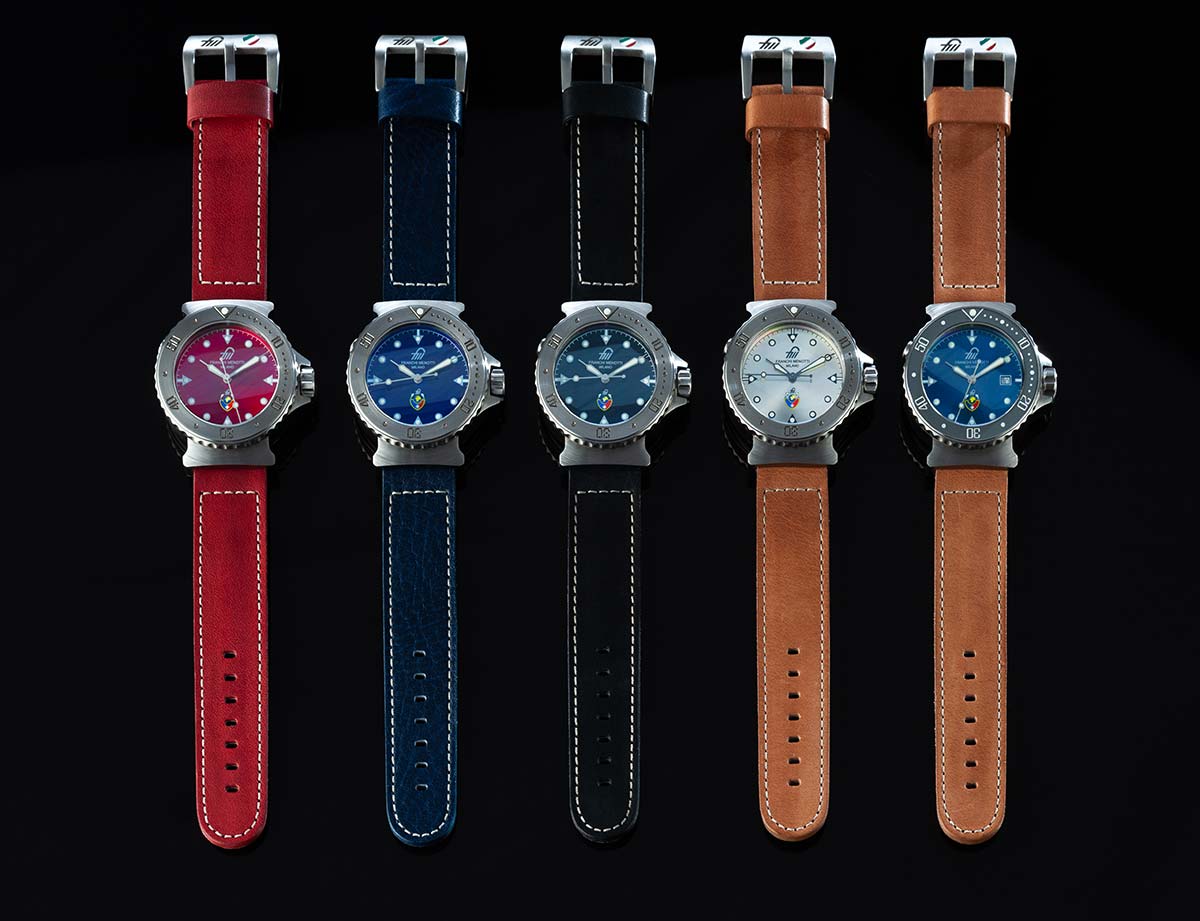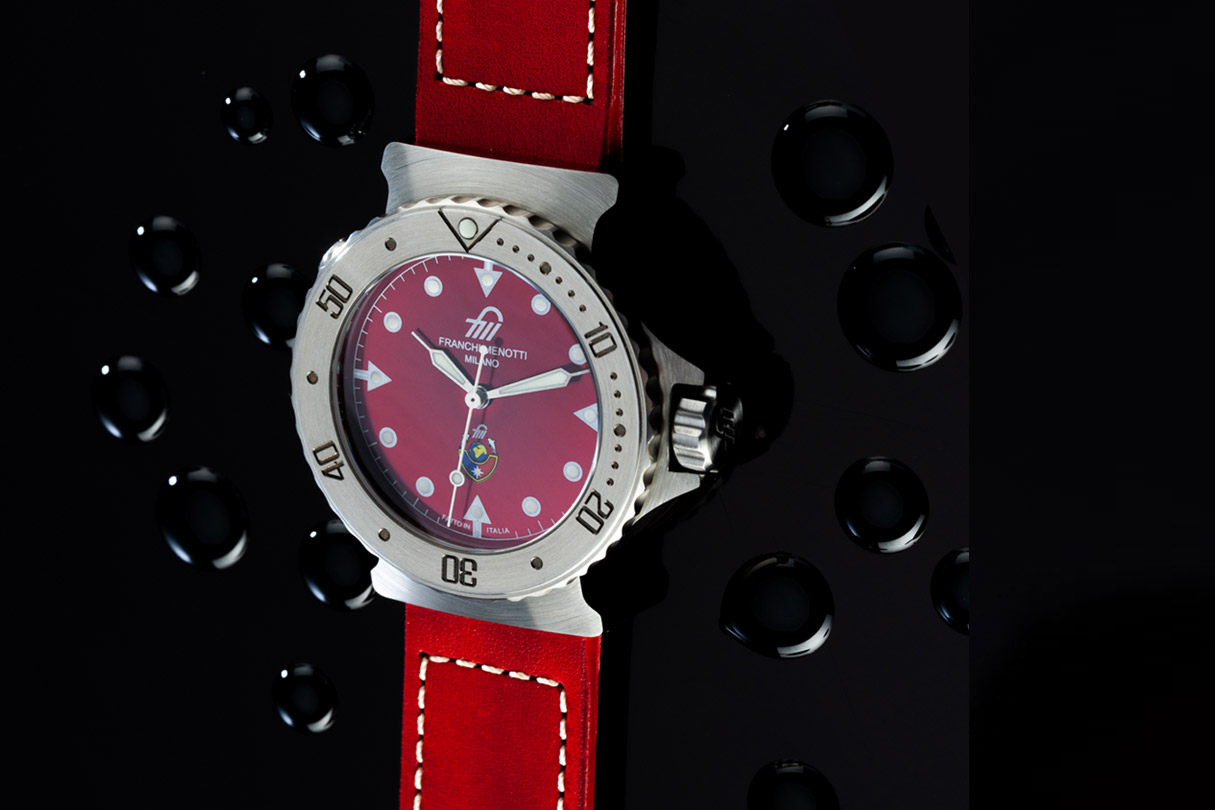Here are our answers to your most frequent questions
Twist the crown (located at 3 o’ clock) counter-clockwise until it comes loose, after which you can pull it out. When it clicks, you can set the time. Then, pull the crown up again to click a second time, which will allow you to change the time.
Once you have set the date and time, press the crown back down into the case, screwing it clockwise until it clicks in place (avoid using excessive force or any kind of tools).
In the future, we plan to manufacture rubber straps, as well as a steel bracelet.
Leather was chosen not only to honour the tradition of the brand, but also because it adds a touch of elegance. However, the leather has undergone a special treatment to make it water-repellent and the colour is fast.
The unidirectional bezel serves to calculate how long you stay underwater.
By lining the triangle or zero marker (normally located at 12 o’ clock) up with the minute hand, a diver can tell exactly when they entered the water and how long the dive has lasted.
The bezel only ever moves in a counter-clockwise direction (for safety reasons – if it should get bumped out of place, it would nevertheless mark more time and never less).
Traditionally, our brand has always assembled Swiss movements. Not that we have anything against Japanese movements, but a great number of watch lovers like ourselves continue to prefer Swiss movements. Quartz movements are more accurate, but the trouble is that the battery can run out and replacing it when you have to spend large amounts of time in isolated places can be a problem. In addition, quartz simply cannot compete with the poetry of a mechanical movement.
You must ensure that the crown is screwed on tight, as explained in the attached booklet. This is essential to lock water out.

You should also make sure that the strap is properly attached, just in case the watch falls off accidentally.
Bear in mind that chlorinated water, seawater and soapy water can damage the seals in the long term, so after the watch has been in water, we recommend that you rinse it well in fresh water.
The valve is located to the left of the case.
This is a device that allows helium molecules to escape during the decompression stage when saturation divers have finished operating at depth.
Whenever a deep-sea diver goes into a hyperbaric chamber for decompression, they breathe in a mixture of helium and oxygen gases.

Being very small, the helium molecules can slip through the seals and get inside the case.
During the decompression process (while resurfacing), the valve allows the helium to escape rapidly and avoids any build-up of pressurised gas that might otherwise blow the crystal off the watch.




